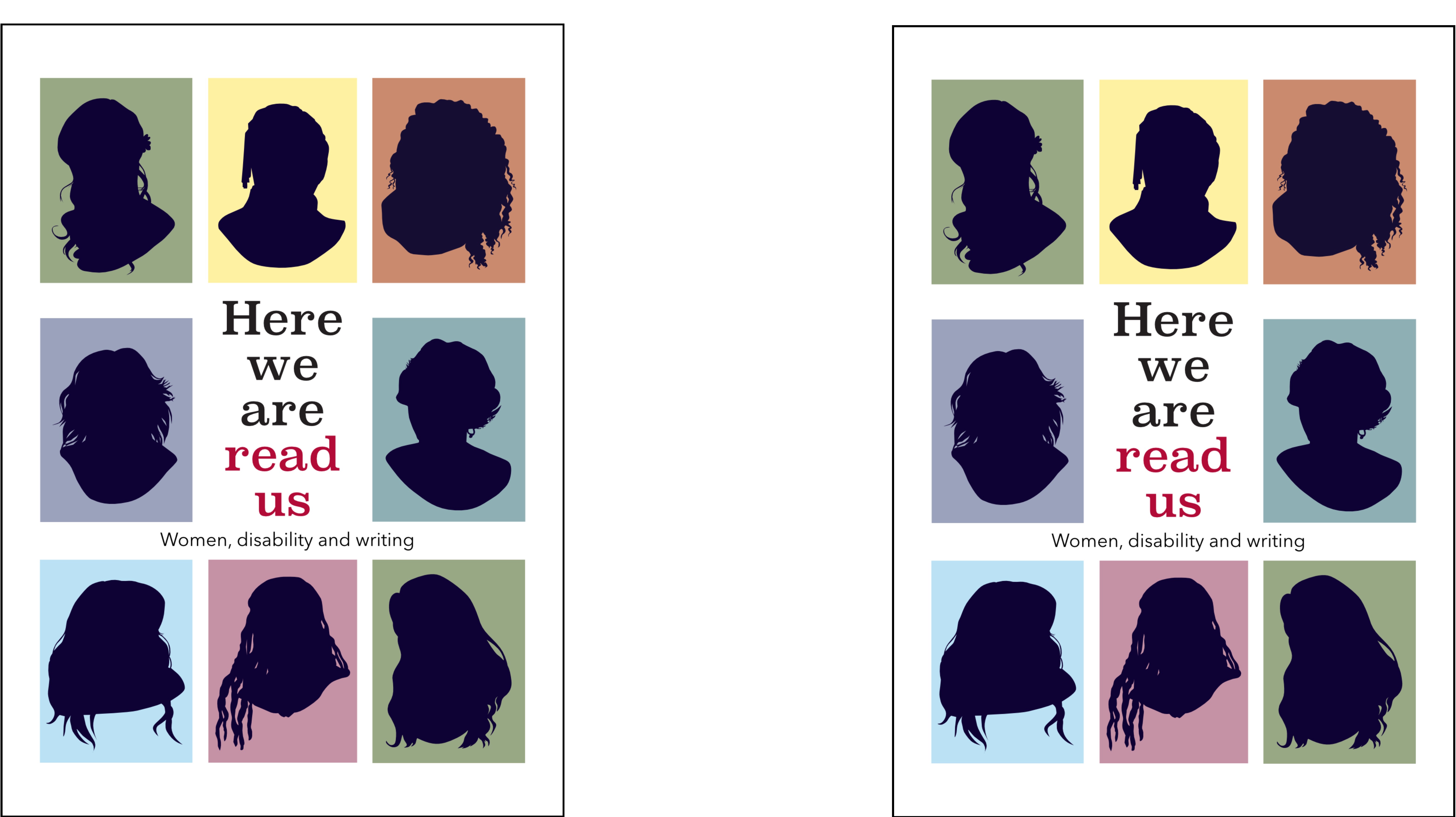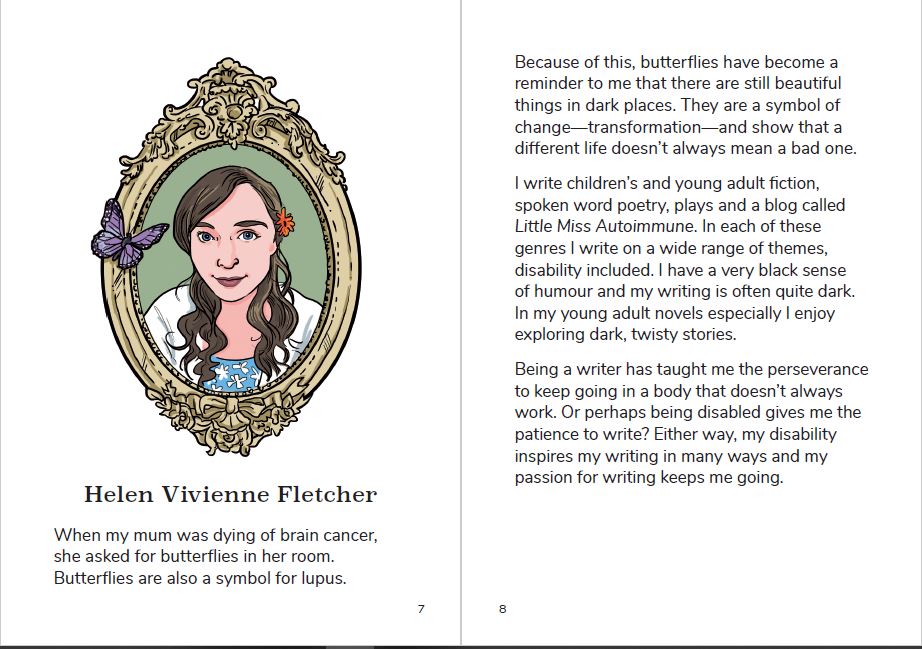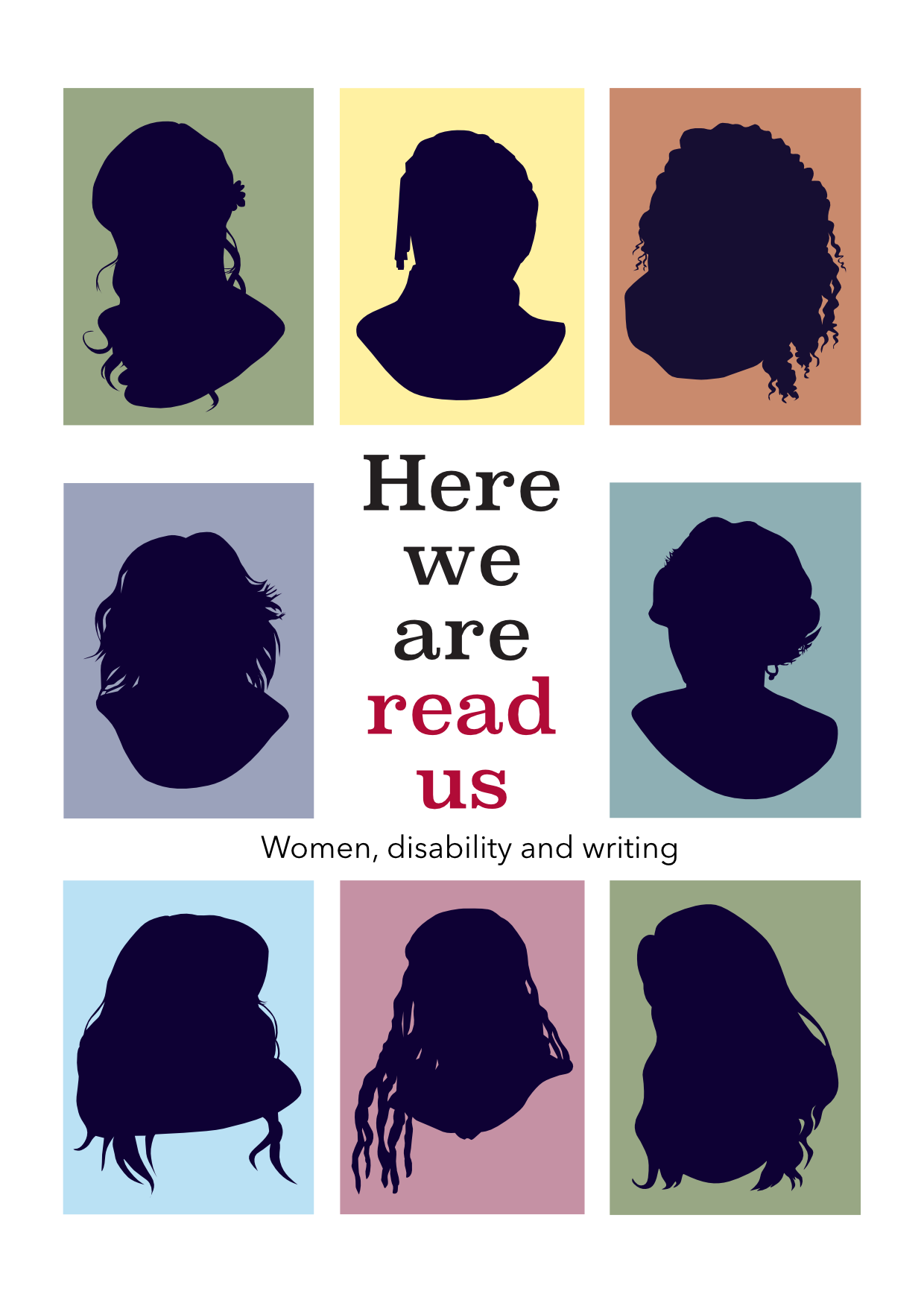Jane Arthur reviews an enlightening new book celebrating eight New Zealand writers. Here We Are, Read Us: Women, Disability and Writing is a must-have for every school library and classroom, and there’s no excuses: the book is free!

This little book is odd in the best way something can be odd. Odd as in unique; unique as in revolutionary. I’ve never come across anything quite like it as far as its exemplary accessibility and embodiment of message goes. From the publishers:
‘This little book with big ideas features eight diverse, well-known and emerging women writers. They are: Tusiata Avia, Steff Green, Helen Vivienne Fletcher, Charlotte Simmonds, Michele Leggott, Trish Harris, Te Awhina Arahanga and Robin Hyde (the only non-living writer). They are novelists, poets, essayists, playwrights, memoirists and bloggers. The important thing they have in common is that they all share the lived experience of disability.’
The book is available for free in a wide range of formats: e-book, large print, audio, Braille and more. It was produced thanks to funding from Creative New Zealand, Whitireia and Weltec Research and Innovation Fund, Rehabilitation Welfare Trust, and Wellington Paraplegic and Physically Disabled Trust Board, and supported by Arts Access Aotearoa. The writing is clean and brilliantly edited, the fonts are stylish and highly readable, and the illustrations by Adele Jackson are stunning. It is suitable for a wide range of readership, from upper-primary to adults.
Each writer’s chapter opens with an illustrated portrait, with a symbol on the picture frame – including things like a skull, a crane, a butterfly. The writers chose their symbols and, in their own words, they explain the metaphor, movingly and succinctly.
The book follows a similar format to Goodnight Stories for Rebel Girls and the many other books in that line, but this is one of the most successful I’ve seen, partly because it allows the women to speak for themselves – all but Robin Hyde (who died decades ago) write about themselves in the first person – and partly because of its all-in approach to inclusivity.

For such a short, simple text – the eight writers get only about 150 words each – it packs a powerful punch. For able-bodied, neurotypical readers, there’s much to think about here: namely, people are more than the sum of their parts. For disabled readers, there’s that – and visibility.
And what are ‘disabilities’? Here, they are mobility and vision impairments, epilepsy, mental illness, autism and more. Because, often, disabilities can be invisible – and this book goes a long way in the fight for understanding here. Not every disabled person uses a wheelchair (and not every wheelchair user needs to use it all the time). Read this book before you accuse someone of illicitly using the Accessible Carpark spot …
To a degree, the writers here show that living with a disability informs your life and writing as much as any other formative experience – which is to say, it does and it doesn’t. As Trish Harris writes:
‘I was cautioned in my 20s not to write about disability related things because I would become pigeon-holed as a writer—as if my visible disability was so loud that to write about it as well would obliterate all other aspects of me. But for me, writing in this area is like dipping a bucket down into a well. What you haul up is often deeply personal yet has a strong universal connection.’
Being disabled is just one part of the multi-faceted ways of being human. On Earth there are children’s book writers, transgender people, Sāmoans, Pākehā, blind people, poets, weightlifters, librarians, playwrights, people with epilepsy, celebrity chefs … A person can be all or none or a few of those things.
The message here is: these writers write despite their disabilities. It’s also: these writers’ disabilities have made them who they are. And: their disabilities haven’t changed who they are. It’s: their achievements are great because of their disabilities. Their achievements are great despite their disabilities. Their achievements are great. It’s both overcoming and getting-on-with; a battle and no-big-deal.
Could the ‘Crip the Lit’ people behind this book (Robyn Hunt and Trish Harris) please take control of the world’s publishing for a season or two? We’d truly get something for (and of and by) everyone, and it’d all be impeccably – and accessibly – produced, too. Highly recommended.
.

Here We Are, Read Us: Women, Disability And Writing
Published by Crip the Lit

Jane Arthur
Jane Arthur's debut children's book, Brown Bird(PRH) was published in May 2024 to widespread acclaim. Jane is co-founder of The Sapling, co-owned and managed GOOD BOOKS, a small independent bookshop in Pōneke Wellington and has twice judged the NZ Book Awards for Children and Young Adults, in 2019 and 2020. Her debut poetry collection, Craven (VUP) won the Jessie Mackay Prize for best first book of poetry at the 2020 Ockham NZ Book Awards, and her second collection, Calamities!(THWUP) was longlisted for the Mary and Peter Biggs Award for Poetry in the 2024 Ockham Awards.



